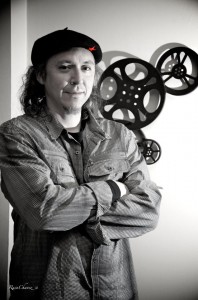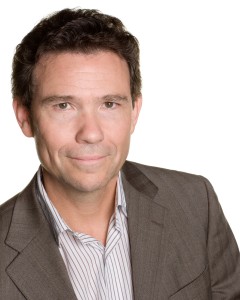In order to be able to truly express oneself creatively, one must first feel secure enough to do so. In this day and age though, where privacy is becoming more and more of a privilege than a norm, how do we find that space to safely express ourselves and be vulnerable? Independent filmmaker, digital media creative and arts advocate Humberto Perez along with award-winning and nationally-recognized expert on stage movement, Mark Olsen will be discussing this at SXSW Interactive this year. I managed to ask these two notable creatives a few questions ahead of SXSW 2014.
What inspires you?
Humberto: I’m inspired by the music that I listen to, the artistic creations that I

surround myself with, the remarkable people that fight for a healthy way of life & the preservation of human dignity, my students who against many obstacles still continue to forge ahead, simple & magnificent natural settings, and the love of my life.
Mark: The moments when I feel the most inspired is when I witness the moment and share the moment of inspiration with others. As a teacher, I strive to set up the conditions whereby the the intersection of communication and imagination sparks an extraordinary revelation. Those moments inspire me.
In the introduction on the SXSW website about the conversation that you will be leading, it says that creative expression is squelched by unsafe spaces. What would is your definition of an ‘unsafe space’?
Humberto: It’s a space where people do not feel trust, compassion, relaxed, liberated, appreciated, and loved.
Mark: My definition is actually only partially relevant. However, the necessary atmosphere that must be earned because it does not happen on its own, is one where everyone within the space feels as if they can breathe deeply, can express or not express themselves, and can exercise a form of listening that promotes a shared honoring of being present at the same time and place. An unsafe space is any space that is troubled with social masking, that is pressured with selfish agendas, that is disrespectful or threatens human dignity.
Art is an expression of the soul while education is somewhat a science; knowledge that is passed down. Thus, the term ‘art education’ seems somewhat an oxymoron. What exactly does ‘art education’ mean to you? Is there such a thing as ‘bad art’?
Humberto: Interesting. There is a science to creating any kind of art. Sometimes we are very conscious about this, and sometimes we are not. ‘Art Education’ is for me like the master and the apprentice. The master takes the apprentice under their wing, and teaches them. The master exposes the apprentice to experiences that develop their skill sets & knowledge base. Hopefully, if done right, these experiences eventually lead the apprentice towards becoming a master artist. Then they take on some new apprentices under their wings & the process continues.
As for bad art. I can be very critical of art, and there is art that does not appeal to me. If a student of mine, who has a hard time expressing his or herself creates a work of art that is not that good technically, am I going to tell that student that they created ‘bad art’? I will praise the student for expressing themselves. And I will give critical feedback as to how to take thier art form to the next level. A valuable lesson that I learned from Mark Olsen while I was in his Ritual Ensemble Theatre class twenty years ago was that “by working in groups with a singular artistic aim, people can learn to overcome fear, to create mutual trust, and to gain knowledge through compassionate understanding.” And when a group of people get together and create a work of art that expresses the fabric of every individual of that group then you have Extraordinary Art.
Mark: You know, to a parent, almost any form of expression of their child is appreciated and seen as worthy of attention. However, the measure of good and bad expression in any medium, in the adult sphere, is linked to a very complex web of intangibles, not the least of which is historical context. Education is no different. What is deemed worthy of study in one era is eschewed or discounted in another. And each new generation has the advantage of hindsight upon which they hope to shape the present choices. However, the human family has formulated some fundamental principles for both art and education. They both must somehow, in their most potent and valued forms, lead us toward improved quality of life. A child’s crayon drawing placed where a parent can see it and the child can see the parent seeing it, provides a series of moments that produce, even in small doses, improved quality of life. A visit to a museum where a painting by a master painter is carefully and lovingly placed, has the power to do the same. Education is largely about pointing the way toward that experience in countless other endeavors, hoping to ease the fear of the unknown.
In this fast paced digital media world where everything seems to be about science and technology, what place does art have?
Humberto: I have to quote the great scientist, Albert Einstein, “Imagination is more important than knowledge”. I think we have to work that imagination muscle. It’s where creativity comes from. Schools do a great job of killing creativity. That needs to change. Schools should be nurturing creativity, alongside science and technology. I also believe that all these new technological platforms are an opportunity to create new art forms, and expand on the old art forms. Especially, when these types of technological platforms are accessible to underrepresented groups that historically have not had a voice in the public arena and in media.
Mark: Art has the place now of creating the campfire experience.
In your opinion, when a piece of art is created exclusively for mainstream consumption, does it take away from the quality of the work? For eg; a song by a popstar manufactured to sell records. Does the fact that is was manufactured automatically make it of less quality even though it moves its’ audience and they relate to it?

Mark: We are understandably fearful of our headlong plunge into the technological future where the human response mechanisms are so well understood that a programmed formula of sound can evoke sensations. However, if we drill down the scale, on the atomic level, these divisions of quality become moot. If one defines quality as related to those sounds and expressions that are strongly linked to flesh and blood, then yes, manufactured music is of a lesser quality. if you define musical quality by the effect it has on the most number of people, the equation changes. If one studies all that went into the manufacture of a mainstream pop song, the equation changes again. In short, it is all context driven and changes with each person.
Humberto: I don’t think it takes away from the quality of the work. I do think that they may have used a formula that produces a record that will sell, which works for some people. I’m not a fan of just using a formula to sell records or art. I believe that art must become a living, soulful piece of work that transcends time.
Who should attend this discussion?
Mark: I would love it if we had teachers, administrators, students, visual artists, actors, directors, film makers, musicians, writers, psychologists, social workers, and anyone wanting to enhance their own quality of life and to change their relationship to time.
Humberto: It would be great to have a wide array of people from different professional, cultural, and educational backgrounds attend this discussion because we have some really challenging problems to solve in the world. Therefore, it is increasingly important to create and nurture safe spaces for the creative impulses to emerge and thrive. One of the best things about SXSW Interactive is that it attracts lots of people who are passionate about making a positive contribution to humanity. So we need to get all these people and more to attend so we can have a conversation about how to create workplaces & learning spaces that allow for this free flow of ideas and creativity. We want to hear from you!
What do you hope to come out of this discussion?
Mark: Anytime we or anyone else has a close call with death, there is an unmistakable desire to live each moment to the fullest. What exactly does that mean? What is fullness? If the discussion does what Humberto and I hope it does, it will inspire others to ask real questions and not to to settle for answers that just sound like answers.
Humberto: I have to totally agree with Mark on this one!
